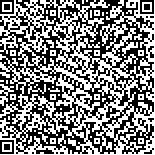| 摘要: |
| [摘要] 目的 探讨阿德福韦酯治疗初治慢性乙型肝炎(chronic hepatitis B,CHB)过程中应答不佳的相关因素。方法 收集2011-01~2014-01应用阿德福韦酯治疗80例CHB患者的临床资料,其中HBeAg阳性患者46例,HBeAg阴性患者34例,分析阿德福韦酯治疗CHB应答不佳的相关因素。结果 HBeAg阳性CHB患者中,治疗前HBV DNA载量、HBsAg定量、体重指数是完全应答与否的影响因素(P<0.05)。HBeAg阴性CHB患者中,治疗前HBV DNA载量、体重指数是完全应答与否的影响因素(P<0.05)。HBeAg阳性时,rtA181V和rtN236T位点变异率≥5%时易引起应答不佳(P<0.05)。HBeAg阴性时,rtN236T≥5%时易引起应答不佳(P<0.05),rtA181V<5%与应答不佳无关(P>0.05)。HBeAg阳性组治疗4周时,HBV DNA下降幅度对应答没有明显影响(P>0.05)。治疗12周、24周时,HBV DNA下降幅度在低于(1.326±0.907)log10copies/ml、(1.279±1.156)log10copies/ml时容易出现应答不佳(P<0.05)。HBeAg阴性组治疗4周时,HBV DNA下降幅度对应答没有明显影响(P>0.05)。治疗12周、24周时,HBV DNA下降幅度在低于(0.983±0.706)log10copies/ml、(1.178±0.736)log10copies/ml时容易出现应答不佳(P<0.05)。而未发现谷丙转氨酶(ALT)、谷草转氨酶(AST)的变化幅度对应答有影响(P>0.05)。结论 患者的基线资料及治疗过程中HBV DNA下降幅度是阿德福韦酯治疗CHB出现应答不佳的影响因素,应根据患者的基本情况制定个体化的治疗方案,以降低应答不佳现象的发生率。 |
| 关键词: 阿德福韦酯 慢性乙型肝炎 应答不佳 |
| DOI:10.3969/j.issn.1674-3806.2015.06.12 |
| 分类号:R 512.6+2 |
| 基金项目: |
|
| Studies on the related factors of poor virological response to the ADV treatment of chronic hepatitis B |
|
ZHAO Hong-kui, BIAN Cheng
|
|
Qingdao University Medical College, Shandong 261100, China
|
| Abstract: |
| [Abstract] Objective To investigate the factors of poor virological response to adforvir dipivoxil(ADV) treatment in patients with chronic hepatitis B.Methods The clinical data of the factors of poor virological response to ADV treatment in patients with chronic hepatitis B were retrospectively analyzed from January 2011 to January 2014.Results BMI, HBV DNA, HBsAg when HBeAg was positive and BMI, HBV DNA when HBeAg was negative were correlated with the response(P<0.05). There was significantly difference in V of 181 mutations (≥5%) and T of 236 mutations (≥5%) when HBeAg was positive (P<0.05). There was significantly difference in T of 236 mutations (≥5%) when HBeAg was negative(P<0.05). But there were no significant differences in V of 181 mutations(<5%) when HBeAg was negative(P>0.05). HBV DNA which was lower than the basic levels in 12 and 24 weeks after treatment (1.326±0.907)log10copies/ml and (1.279±1.156)log10copies/ml was easy to have the poor virological response(P<0.05) in the HBeAg positive patients. HBV DNA which was lower than the basic levels in 12 and 24 weeks after treatment (0.983±0.706)log10copies/ml and (1.178±0.736)log10copies/ml was easy to have the poor virological response(P<0.05) in the HBeAg negative patients. There were no obvious relationships between the changes of ALT and AST and the response(P>0.05).Conclusion The baseline data and the changes of HBV DNA are the factors of poor virological response to ADV treatment in patients with chronic hepatitis B. Individualized treatments should be established according to the above data to reduce the incidence of poor response phenomenon. |
| Key words: Adforvir dipivoxil Chronic hepatitis B Poor response |

